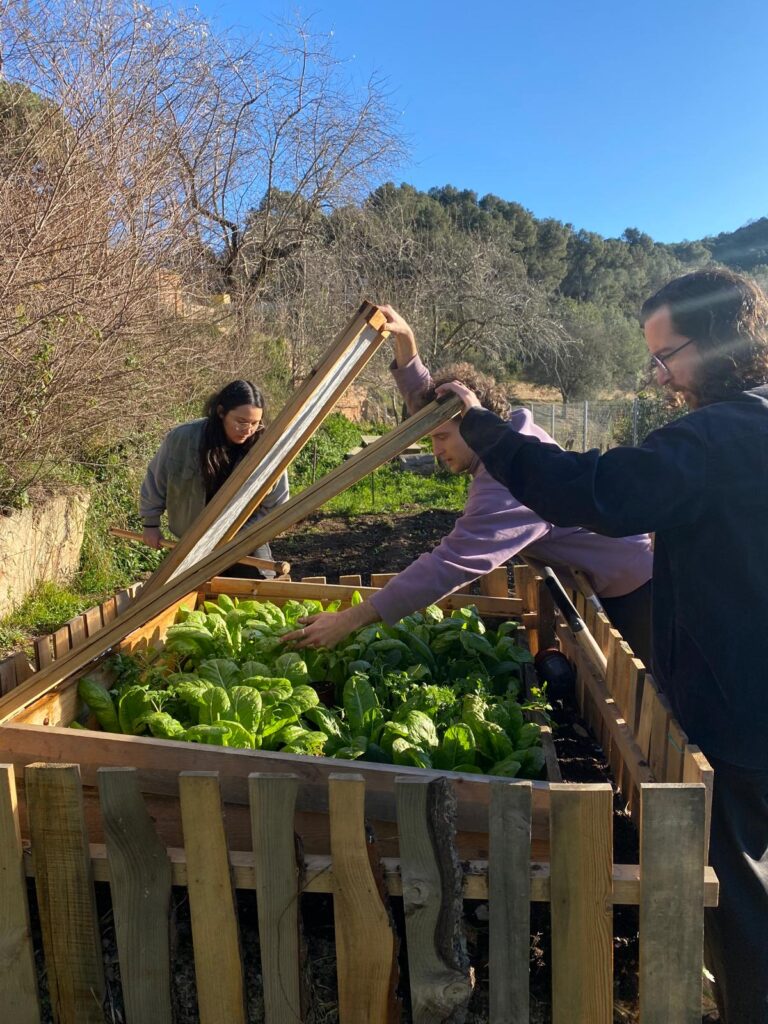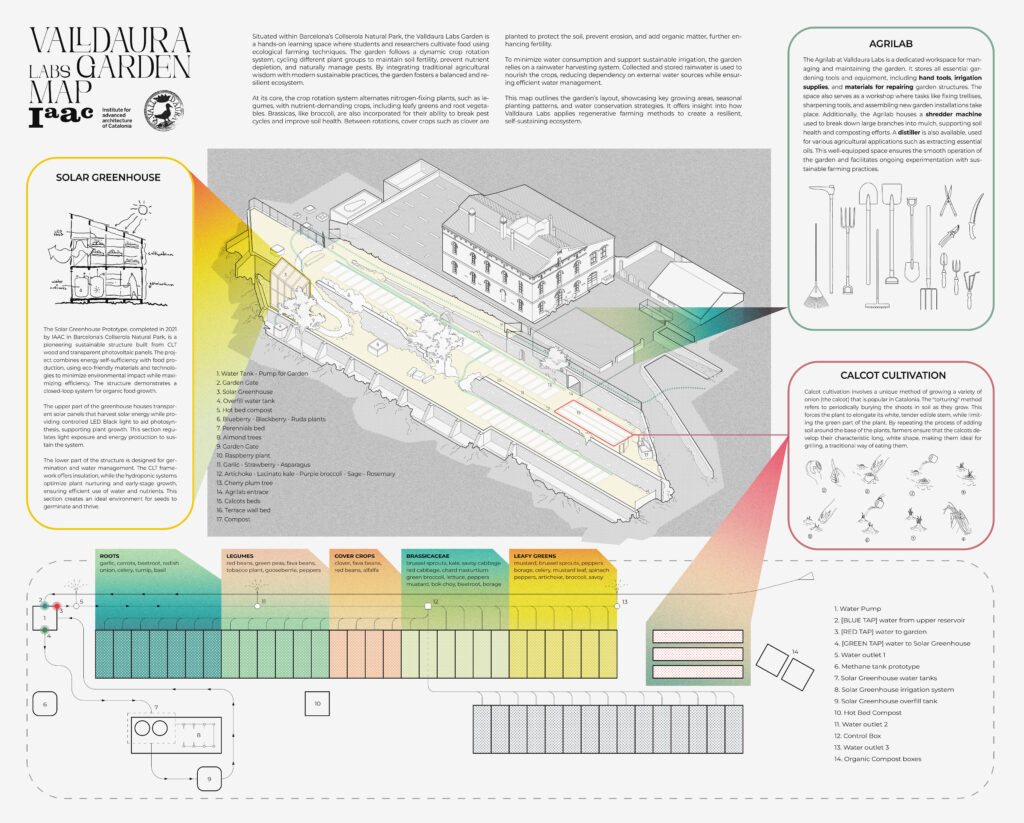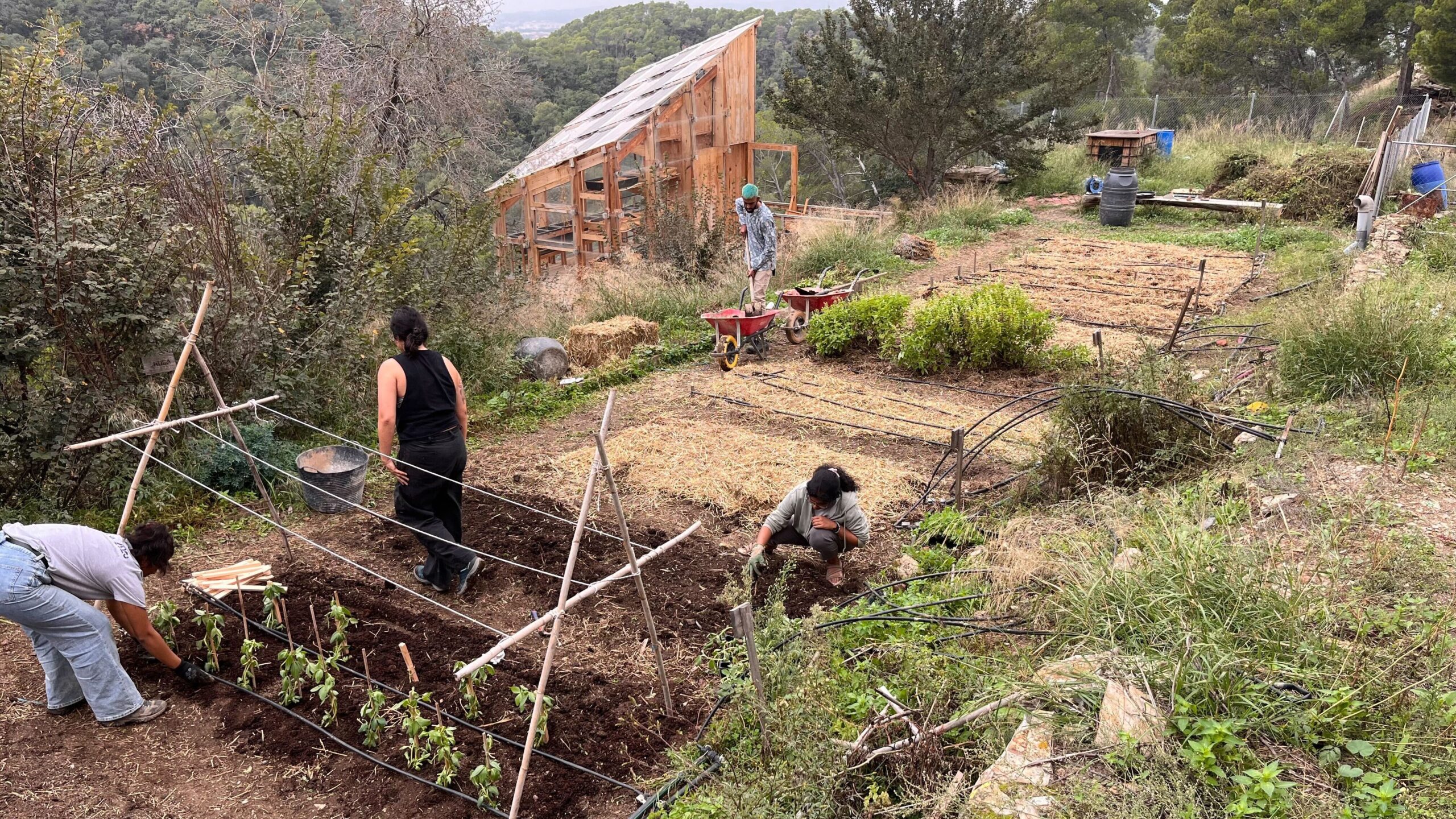
Valldaura Garden
Valldaura is a living laboratory for 21st century innovation and self-sufficiency. We practice techniques for small/meso scale agriculture, ensuring that some percentage of our food each week is truly zero kilometer. The farm is an important part of the Valldaura experience, it is where we learn about how to grow high yield organic crops, promote biodiversity through food production, find a restful place away from the all consuming world of design and digital fabrication, and connect with a sense of place by getting dirty growing food.
Nitrogen-cycle optimized crop rotation
The nitrogen cycle is a fundamental ecological process that transforms atmospheric nitrogen (N₂) into forms accessible to plants, such as ammonia (NH₃) and nitrates (NO₃⁻). This cycle begins with nitrogen fixation, where specialized bacteria, often associated with leguminous plants, convert N₂ into NH₃. Subsequently, nitrifying bacteria in the soil oxidize NH₃ to NO₃⁻, which plants absorb to synthesize essential proteins and nucleic acids. Decomposers then break down plant and animal residues, returning nitrogen to the soil as NH₃, which can either be taken up by plants again or undergo denitrification, releasing N₂ back into the atmosphere. Incorporating legumes into crop rotations enhances soil nitrogen content through biological nitrogen fixation, reducing the need for synthetic fertilizers and promoting sustainable agriculture.
Crop rotation in our garden strategically follows the nitrogen cycle to optimise soil fertility and plant health. The cycle begins with leguminous crops (Fabaceae), such as beans and peas, which form symbiotic relationships with Rhizobium bacteria in their root nodules. These bacteria fix atmospheric nitrogen (N₂) into ammonia (NH₃), which is then converted into plant-available nitrates (NO₃⁻) through nitrification. After legumes enrich the soil with nitrogen, cover crops (e.g., clover, vetch, rye) are planted to prevent leaching, improve soil organic matter, and stabilize nitrogen levels through decomposition. These crops also suppress weeds, reduce erosion, and enhance soil microbial diversity.
Following cover crops, Brassicaceae (e.g., cabbage, broccoli) are introduced, benefiting from the residual nitrogen left by legumes and organic matter from cover crops. These plants require a steady nitrogen supply for their dense foliage and structural development. Next, leafy greens (e.g., lettuce, spinach) are planted, as they are heavy nitrogen feeders, relying on remaining nitrates for chlorophyll production and rapid vegetative growth. Finally, root vegetables (e.g., carrots, beets) complete the cycle, requiring moderate nitrogen levels to prevent excessive leaf growth at the expense of root formation. This structured crop rotation not only optimizes nitrogen availability but also dictates the spatial positioning of plants within the garden, ensuring each group follows the other in a logical sequence. As a result, garden beds are organized efficiently, minimizing nutrient depletion, reducing pest buildup, and enhancing soil health for sustained productivity.
Autumn/Winter Rotation
When the term began, the garden was in dire need of some TLC. The upper garden beds had become overrun with weeds, so our first task was clear: remove all the weeds and prepare the beds for this year’s crops. After several hours of clearing, we uncovered a number of resilient plants—peppers, basil, and pumpkins—that had managed to survive from last year’s crop despite the overgrowth.
Once the weeds were gone, we began mixing manure into the existing soil to replenish its nutrients. Manure, rich in organic matter, helps improve soil structure, enhance water retention, and boost microbial activity. This process would lay the foundation for strong, vibrant plant growth throughout the term.
To lock in the nutrients we had added, we covered the beds with a generous layer of straw. Straw mulch acts as a protective shield for the soil, retaining moisture and preventing new weeds from taking root. This simple yet effective strategy helps maintain balance in the garden, giving the plants the best chance to thrive without competing for nutrients or water.
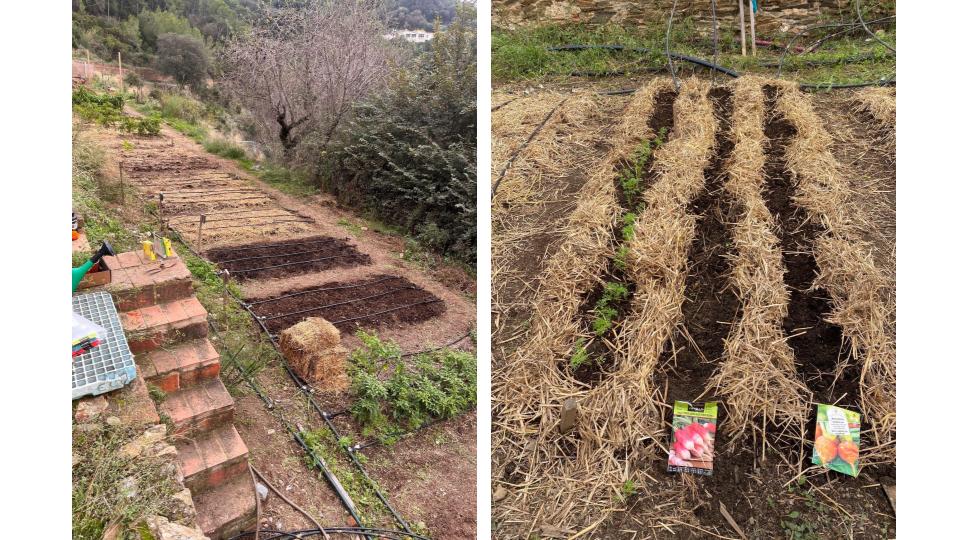
The class was divided into teams, each assigned a garden bed with specific crops based on the nitrogen-cycle crop rotation. The five classes—Brassicaceae, leafy greens, root vegetables, legumes, and cover crops—each play a crucial role in maintaining soil health. Brassicaceae break up compacted soil, leafy greens cover and protect the earth, root vegetables aerate it, legumes fix nitrogen, and cover crops prevent erosion and nutrient loss. This rotation helps keep the soil fertile, reduces pests, and promotes a balanced, sustainable garden environment.
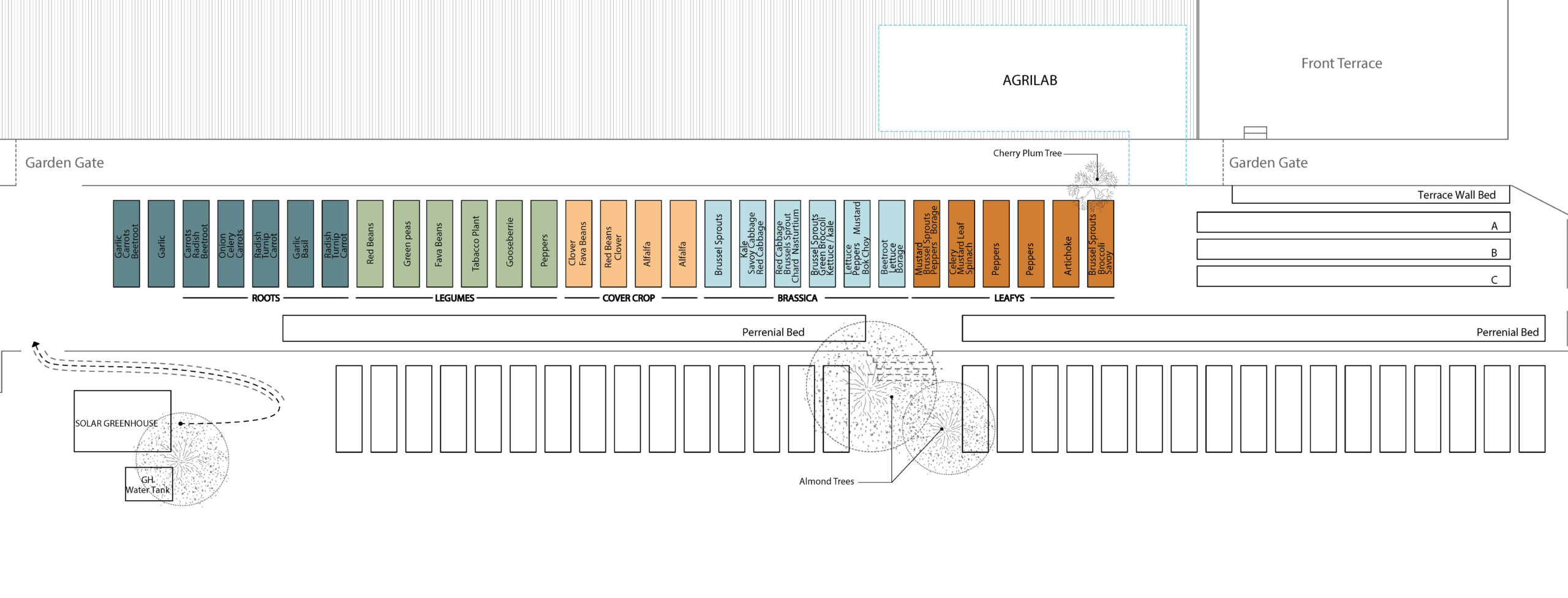
Each group was responsible for carefully recording the details of what was planted in their assigned garden bed. This involved noting the name of each plant, the planting distance between them, the quantity of each plant, and the date of planting. Keeping accurate records ensured that we could track the growth of the crops and assess how well they were adapting to the garden’s conditions. These notes also allowed us to better understand the timing of the planting process.
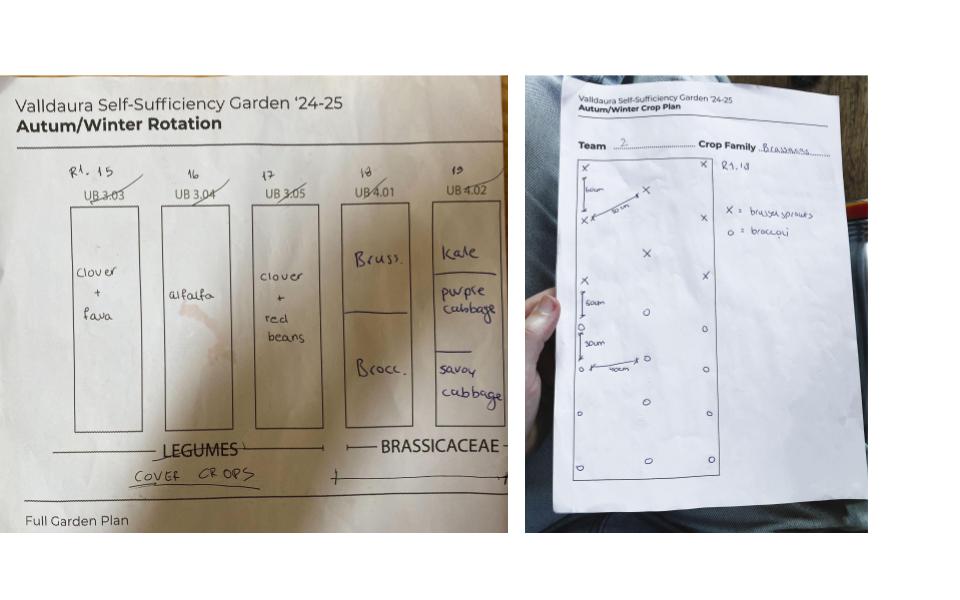
FARMOS
In addition to recording the planting details manually, we also uploaded the information into FarmOS, a website designed to help with garden management, planning, and record-keeping. The website has a site map of the garden, where we can select a specific garden bed and upload information about it. FarmOS provides us with a digital platform to track the progress of the garden and stay organized throughout the term.
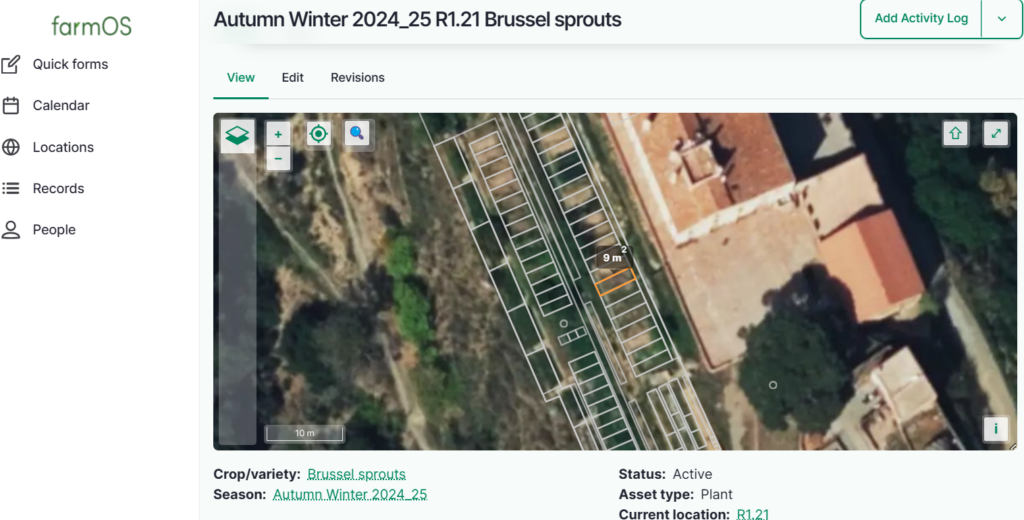
Planting Calcots:
At the beginning of the term, we also planted calçots, a traditional Catalan spring onion. To start, we took the calçot bulbs, trimmed off the tops, and then planted them in furrows we had prepared. The furrows were more than twice the size of the bulbs to give them enough room to grow. We spaced the calçots about 16 centimeters apart to ensure they had enough space. When planting, we made sure to place the bulbs with the flat, cut side facing upwards, as this is where the stems would emerge. After positioning the bulbs in the soil, we covered them partially, leaving the tops exposed. Then, we watered them generously to help them settle into their new environment.
After a few days, the sprouts began to grow, and it was time for the next crucial step—torturing the calçots. This process involves mounding soil around the growing stems, covering most of the plant while leaving just the top exposed. The purpose of this is to blanch the stems, ensuring they remain tender and white, which is what makes calçots so delicious. We repeated this process every time we saw the stems growing longer, gradually building up the soil around them. This technique encourages the characteristic long, white stalks that are key to the calçot’s unique flavor and texture.
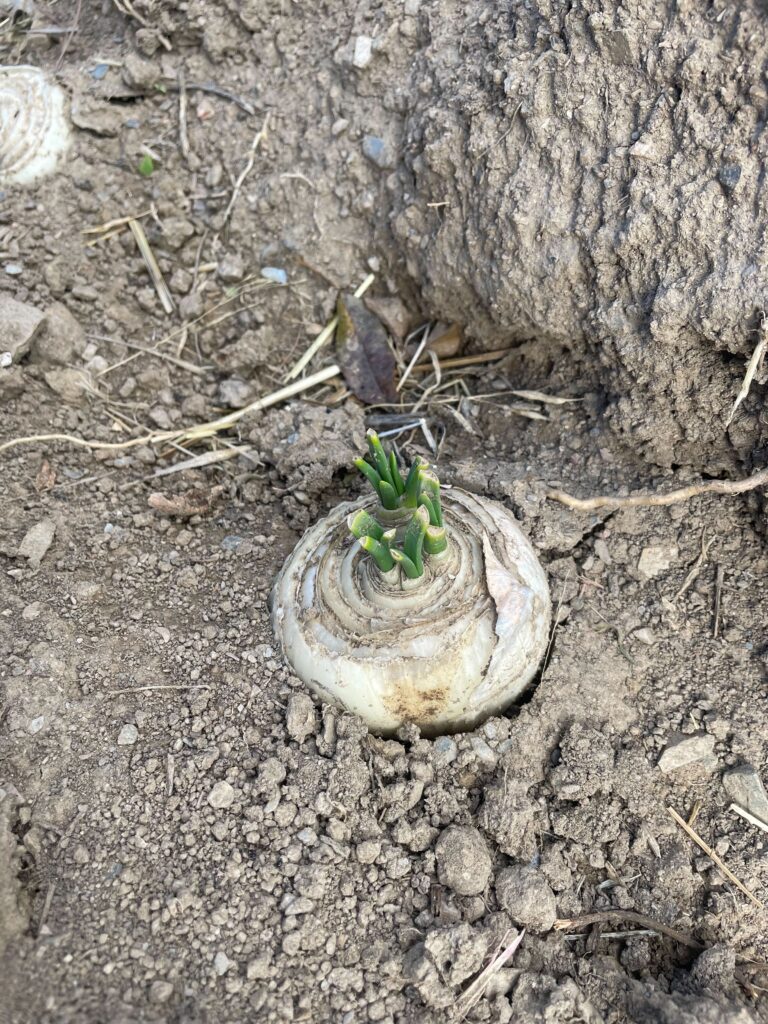
Living willow wall
We decided to create a living willow wall in the garden to help with the trees that were blocking sunlight from the planted beds. We trimmed some of the branches and then braided them together with other branches we moved around, forming a natural wall.

Garden Photos:

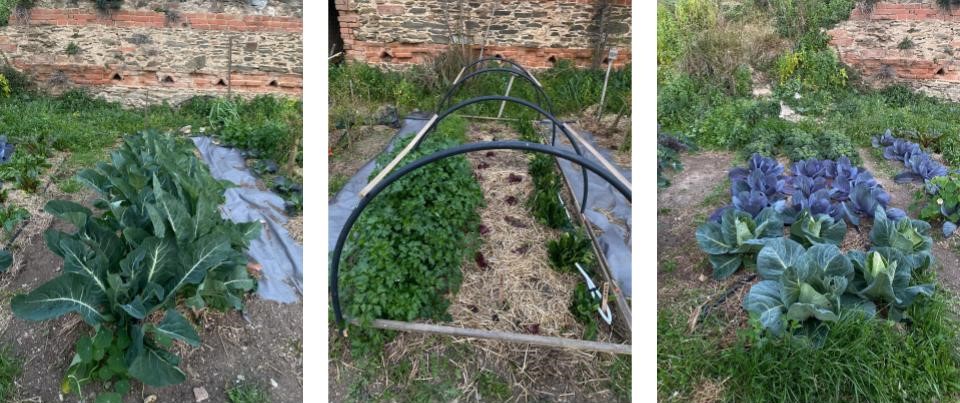
The Solar Greenhouse
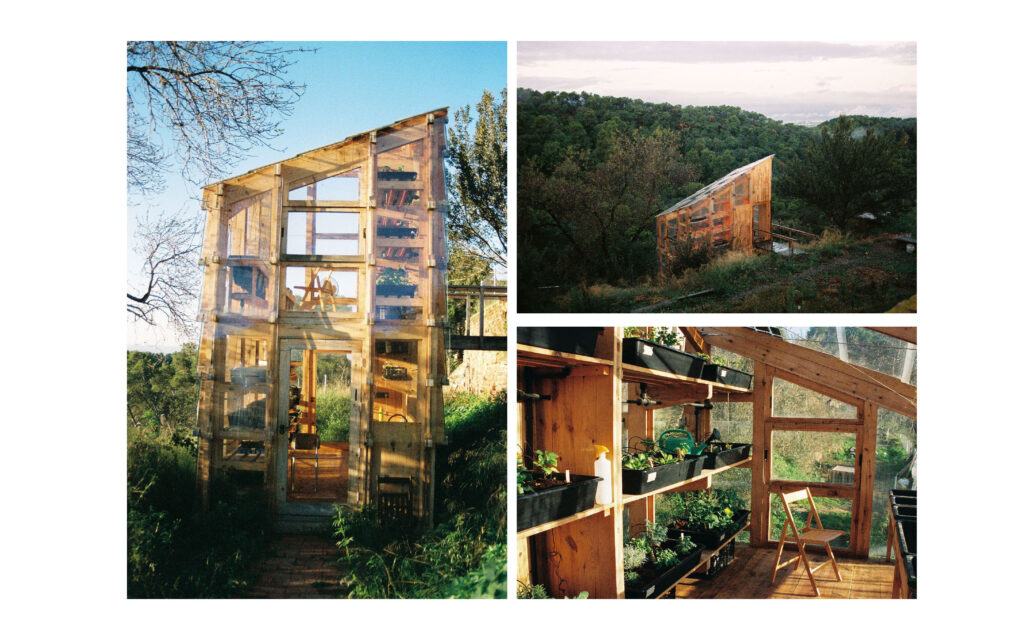
The solar greenhouse worked as an extension of the garden, giving us a controlled space to grow more plants. To get the beds ready, we rehydrated natural coconut fiber with water, making a nice, airy medium for the plants to grow in.
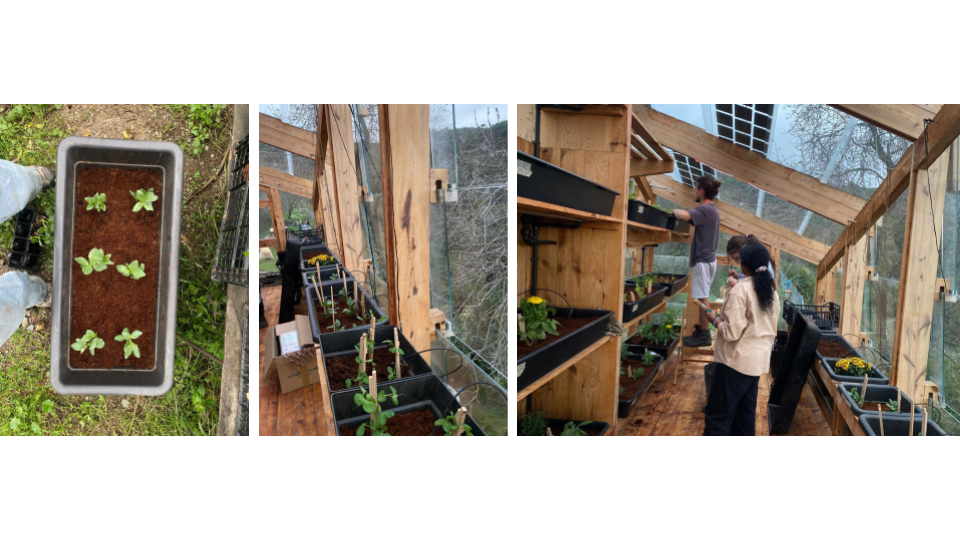
The greenhouse was the perfect place for germinating seedlings. We placed seeds in styrofoam trays filled with manure-rich soil and set the trays inside the greenhouse. Using a bottom watering system, the seedlings could draw water as needed, ensuring they received consistent moisture without the risk of overwatering. This method allowed the seeds to sprout efficiently in a controlled environment, helping them grow strong and healthy before being transplanted into the garden beds outside.
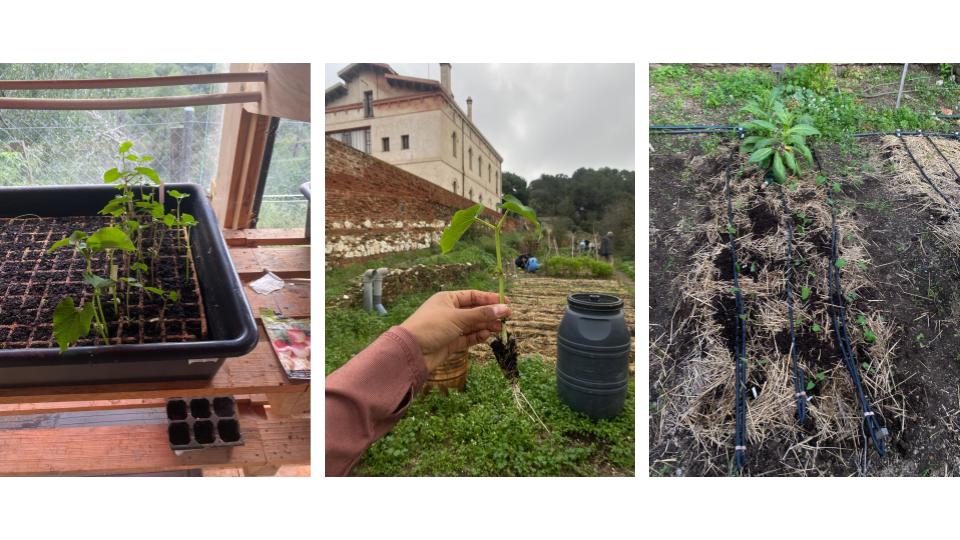
Growing Trees:
The Greenhouse was also the perfect environment to start a small-scale nursery for trees. The nuts from White Oak, Holm Oak, Almond, and Chestnut were collected in October and kept in the fridge for 45 days for stratification. After the successful development of sprouts, they were planted in rich, fertile soil in the trays for flod irrigation and left over the Christmas break.
Within the first two weeks, the trees started growing and should have been transplanted into larger pots with local soil to prevent the small roots from curling in the limited space of the Styrofoam tray. Most of the well-developed trees have been transplanted into bigger pots, but many more will follow since each sprout grows at a different pace.

Photos by Jasper & Marie
Compost:
One of the most important elements in the garden is compost. At Valldaura, we mix our kitchen organic waste with straw and weeds to create a nutrient-rich, natural fertilizer. Compost works through a process of decomposition, where microorganisms break down the organic matter into valuable nutrients for the soil. A healthy compost pile should have a pleasant, slightly sweet smell, which indicates that it’s properly aerated and balanced. It should also feel warm to the touch, as the microbial activity generates heat. This warmth is a sign that the compost is breaking down efficiently, creating a rich, fertile material.
To extend our capacity for composting, a new compost bin was built in the garden, allowing us to manage even more organic waste.
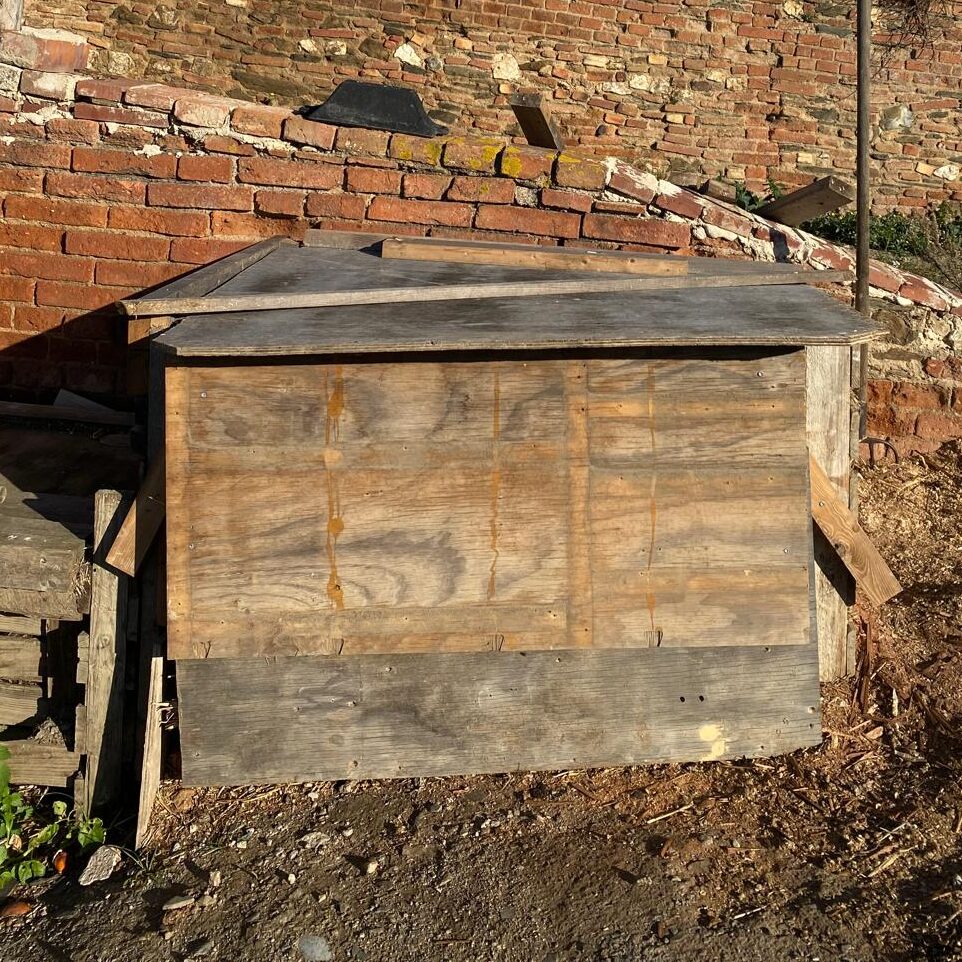
As an experiment, we set up a mini greenhouse in the garden by building a bin filled with weeds we had removed at the beginning of the term, manure soil, dry and green branches, and organic waste from the kitchen. As the compost breaks down, it generates heat, and by adding a plastic lid, we trap that heat inside. This creates a warm, stable environment that mimics the conditions of a greenhouse, allowing plants to thrive even in colder months. The heat helps maintain an ideal temperature for growth while also stimulating microbial activity in the soil, enriching it with essential nutrients.
